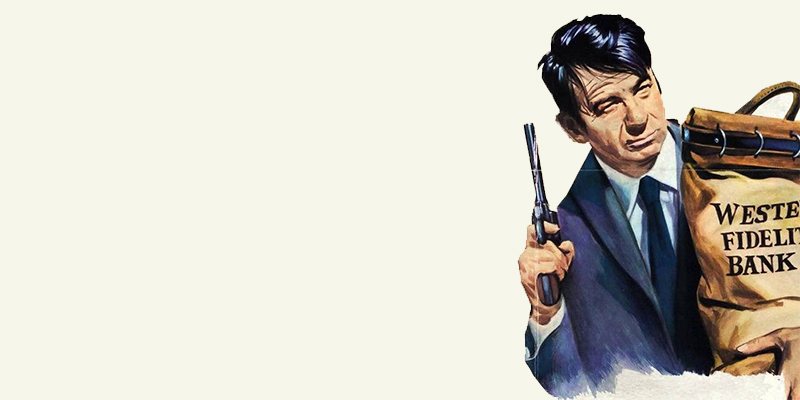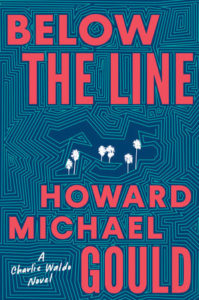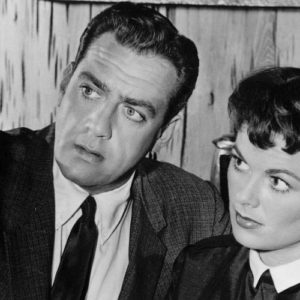A couple of months ago, while we were prepping the movie version of my first novel, Last Looks, the director and star, Tim Kirkby and Charlie Hunnam, got to talking about how each had come independently to The Long Goodbye, the 1973 Robert Altman-Elliott Gould film, as a reference point for the work we were about to do. The Raymond Chandler novel had been a primary influence on my book and screenplay, too, though for entirely different reasons.
Which shouldn’t have been surprising, as Altman’s The Long Goodbye (the script is credited to Leigh Brackett) was less an adaptation than a wholesale reimagining of the genre. That conversation got me thinking more broadly about how Hollywood revived and reinvented noir in the 1970s, at the same time it went about reinventing everything else.
The beginning to middle of that decade was, for sure, as good as things ever got for crime on screen. Its grand classics—Godfather I and II, Chinatown—still pop up on critics’ all-time top ten lists, and you know the other Oscar-winners like The French Connection, The Sting and Klute. But the extravagant quality and quantity of those crown jewels has left a slew of excellent contemporaries unfairly forgotten. I’d like to steer you to half a dozen lesser gems worth a re-watch—or if you’re lucky, an introduction.
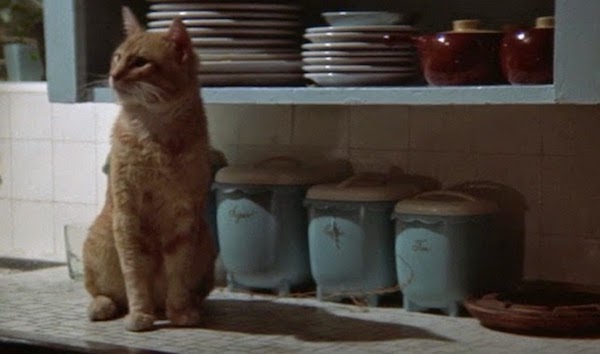
The Long Goodbye (1973)
Probably better known today than the others on this list, it’s still got big fans—but detractors, too, mostly Chandler aficionados who felt it deserved something more like Howard Hawks’s Big Sleep treatment. As Philip Marlowe, Gould replaces Humphrey Bogart’s snap with semi-incoherent mumbling, and Altman didn’t just simplify the plot, he virtually removed it: the first eleven minutes are mostly Marlowe trying to get his cat to eat. Taken on its own terms, though, the film’s a witty mash-up of 40s gumshoe style (Marlowe’s dark suits and anachronistic car) and hedonistic 70s SoCal (his bevy of female neighbors doing topless yoga), filtered through the director’s trademark sonic and visual offhandedness. One shot, in a dusty town square in Mexico, sums up the whole exercise: Gould walks into frame, looks the place over, and continues out; meanwhile, randomly, a pair of stray dogs starts humping behind him. The camera holds on the dogs—you can’t help but imagine Altman imploring the operator to stay with them—until the female suddenly breaks and turns on the male, accidental moviemaking gold. The moment has nothing to do with Philip Marlowe or Raymond Chandler, but it has everything to do with Altman, and, ever since I began to understand what a director does, that’s been plenty for me.

The Late Show (1977)
The comedy is more deliberate in this charmer written and directed by Robert Benton (whose resplendent resume includes Bonnie and Clyde and KRAMER VS. KRAMER). Ira is an old-time gumshoe who calls women “dollies” and low-level criminals “gumballs.” It’s the Robert Mitchum role, only it’s not Mitchum, it’s Art Carney, and Margo, the dolly, is Lily Tomlin, hippie-dippy and talking way too much for the old guy about karma and her period. Though it’s built, and mostly plays, like old school noir, when these three legends swing for a laugh, they hit the ball clean. “I feel like I just dropped acid,” Tomlin says to Carney at one point. “Have you ever dropped acid?” “Well,” he deadpans, “not in the last ten minutes.” In time they warm to each other, of course, and Tomlin even begins to conjure a future as a private eye duo, but Carney knows this is his last ride. When it looks she’s about to meet her end, too, she warns one of the baddies, meaning it: “If you lay a hand on me, I’m telling you, you’re going to pay for it in your next life.” Screenwriting doesn’t get more elegant than that.
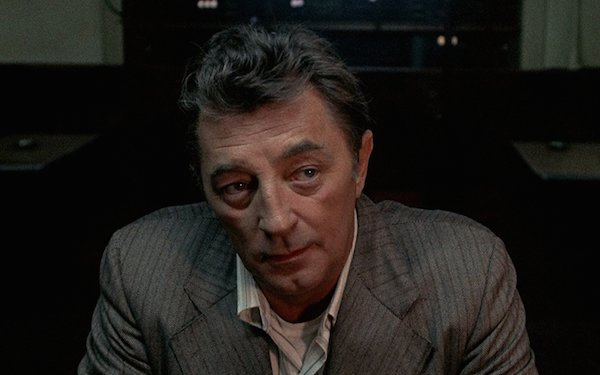
The Friends of Eddie Coyle (1973)
It actually is Robert Mitchum in this adaptation of the George V. Higgins Boston tour de force, and I’ve never liked him better. He plays Eddie “Fingers” Coyle, an aging, working class hood standing up for some friends who got him into a robbery that went bad, facing a prison stretch he can’t handle, and trying to figure out just how much information he’ll need to trade to the authorities to get out of it. Screenwriter Paul Monash and director Peter Yates add a splash of action, but mostly they rely on Higgins’s spare, sparkling dialogue. There are a lot of two-character scenes, increasingly grave negotiations tightening the noose around Mitchum whether he’s on screen or off. Yates cast this one beautifully; each of the heavies (Peter Boyle, Alex Rocco, Richard Jordan) carries a unique flavor of menace. It’s a car wreck in slow-motion, and its unarticulated central truth gets to me every time I watch it: deep down, Eddie Coyle knows, just like we do, that his “friends” don’t give a damn about him.

Charley Varrick (1973)
Unexpected casting here, too, this time Walter Matthau in a natural Clint Eastwood role. Director Don Siegel (working with a script by Howard Rodman and Dean Riesner, from a novel by John Reese), who made five movies with Eastwood, loaded this one up with their frequent collaborators on both sides of the camera, and unlike Carney in The Late Show, Matthau’s not here to add laughs. Instead he brings his world-weary irony to the title role, a stunt pilot turned bank robber who accidentally swipes $750,000 of mob money and finds himself with more than the law on his tail—specifically, Joe Don Baker, whose ominous athletic macho contrasts Matthau’s basset hound ordinariness. “The last of the independents,” Charley Varrick calls himself. “I like that,” says Baker’s hit man, “It has a ring of finality.” The pursuit builds to an ingenious duel between Baker on wheels and Matthau in a wounded airplane. Stylistically, it doesn’t age as well as some of the others, with a bit of late 70s television feel; you should cut it some slack, though, when you think about how much late 70s TV was just cribbing from Don Siegel.

Across 110th Street (1972)
This one, on the other hand—also about indie thieves ripping off the wrong guys and getting more than they bargained for—ages like wine, thanks to its subject and stylistic grit. (Barry Shear directed a script by Luther Davis, from a novel by Wally Ferris.) A heist goes wrong for a black crew and turns them into equal-opportunity killers, gunning down Italian mobsters, black gangsters working for them, and a couple of cops, too. It sets off a battle for Harlem on both sides of the thin blue line: the Mafia tries to hold onto increasingly hostile turf, while the NYPD tries to control the racial tinderbox by assigning a black lieutenant to oversee the white captain who’s ridden herd over the precinct for years. The movie never flinches, the bleakness of the world driving the story and infusing a host of great performances. Anthony Quinn and Yaphet Kotto, those two earthy giants, smolder and surprise as the officers in charge; Ed Bernard and Paul Benjamin break your heart as decent men driven to a desperate crime and more a desperate escape; and, as the local boss beholden to white overbosses, Richard Ward—talk about criminally underappreciated—is galvanizing, equal parts greed, compromise, and pride.

Night Moves (1975)
Director Arthur Penn had already upended the gangster movie (Bonnie and Clyde) and the Western (Little Big Man) before more slyly hauling deep noir into the bright sunshine of the Florida Keys. It’s about a marital detective, Gene Hackman, confronting various marital disasters, including his own. He’s hired to track down the 16-year-old wild child of a former starlet, and finds the girl (Melanie Griffith, in her first major role) living with her stepfather and his girlfriend in a dysfunctional and incestuous triangle, which Hackman’s arrival turns into a fraught quadrangle. The storytelling’s a bit unusual—if you’re paying attention to these things, you’ll notice that there are almost no plot moves during the middle third, and it completely reboots into a new story in the final quarter—yet somehow every minute works. Watching it again recently, I was astonished how many lines from Alan Sharp’s script I recalled just before they were spoken, signal that this movie wore a deep groove in my sensibility without my even realizing it, the mark of a quiet masterpiece.
***

